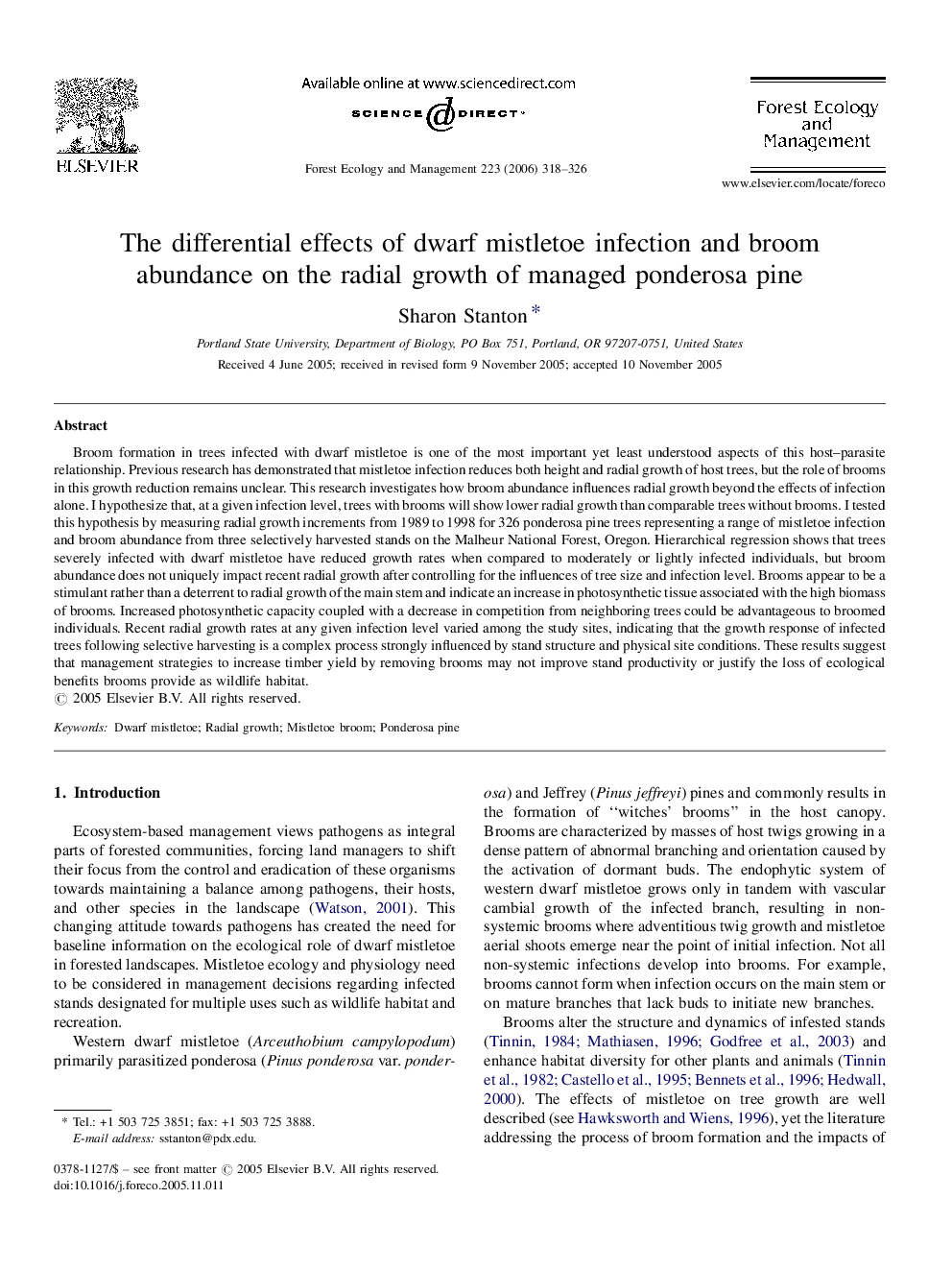| Article ID | Journal | Published Year | Pages | File Type |
|---|---|---|---|---|
| 90600 | Forest Ecology and Management | 2006 | 9 Pages |
Broom formation in trees infected with dwarf mistletoe is one of the most important yet least understood aspects of this host–parasite relationship. Previous research has demonstrated that mistletoe infection reduces both height and radial growth of host trees, but the role of brooms in this growth reduction remains unclear. This research investigates how broom abundance influences radial growth beyond the effects of infection alone. I hypothesize that, at a given infection level, trees with brooms will show lower radial growth than comparable trees without brooms. I tested this hypothesis by measuring radial growth increments from 1989 to 1998 for 326 ponderosa pine trees representing a range of mistletoe infection and broom abundance from three selectively harvested stands on the Malheur National Forest, Oregon. Hierarchical regression shows that trees severely infected with dwarf mistletoe have reduced growth rates when compared to moderately or lightly infected individuals, but broom abundance does not uniquely impact recent radial growth after controlling for the influences of tree size and infection level. Brooms appear to be a stimulant rather than a deterrent to radial growth of the main stem and indicate an increase in photosynthetic tissue associated with the high biomass of brooms. Increased photosynthetic capacity coupled with a decrease in competition from neighboring trees could be advantageous to broomed individuals. Recent radial growth rates at any given infection level varied among the study sites, indicating that the growth response of infected trees following selective harvesting is a complex process strongly influenced by stand structure and physical site conditions. These results suggest that management strategies to increase timber yield by removing brooms may not improve stand productivity or justify the loss of ecological benefits brooms provide as wildlife habitat.
